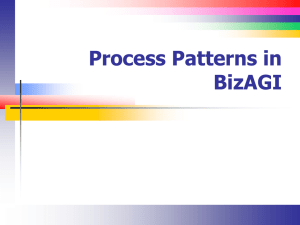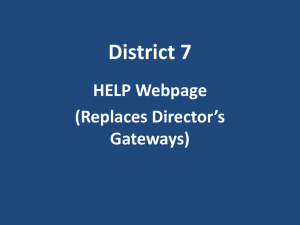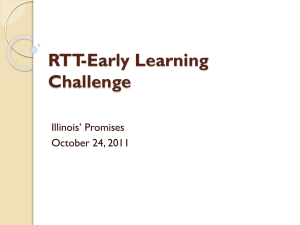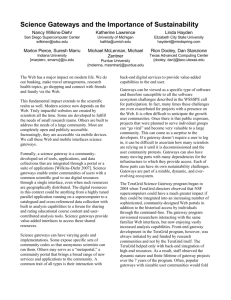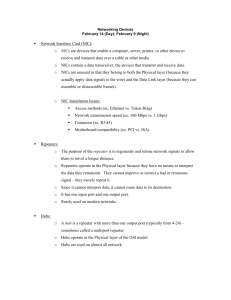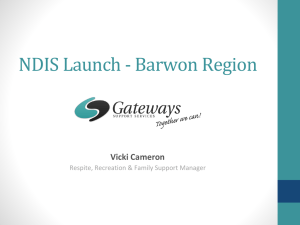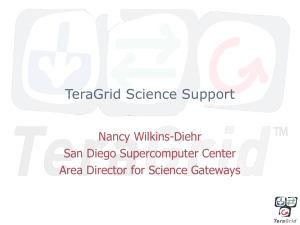Web Services RAT Report
advertisement
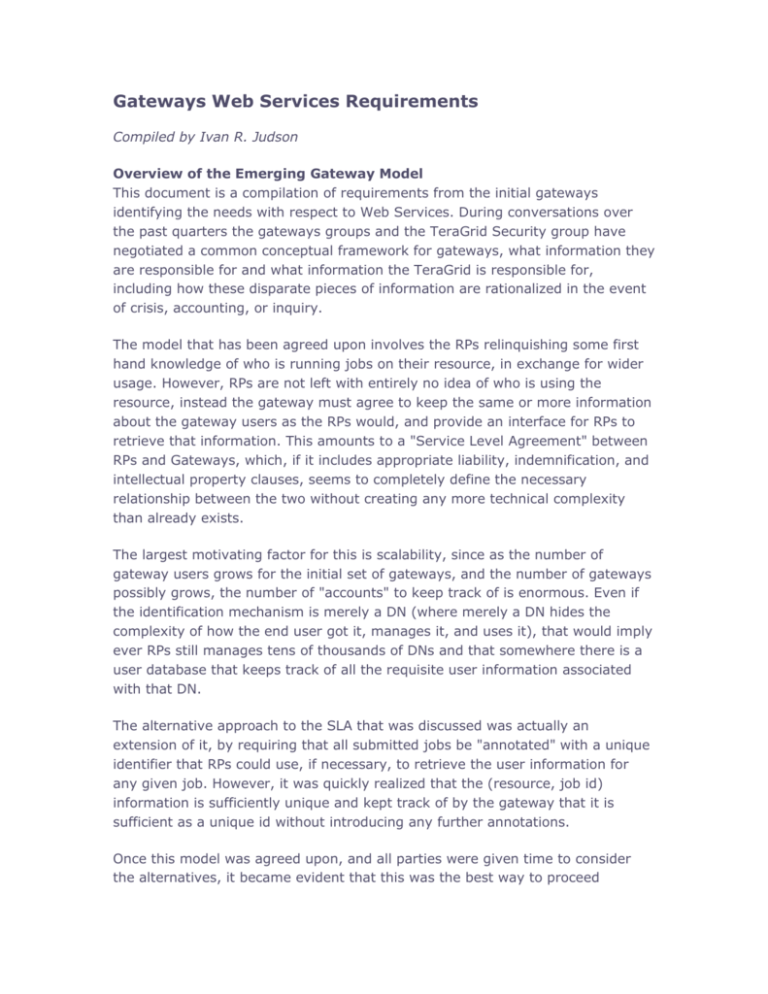
Gateways Web Services Requirements Compiled by Ivan R. Judson Overview of the Emerging Gateway Model This document is a compilation of requirements from the initial gateways identifying the needs with respect to Web Services. During conversations over the past quarters the gateways groups and the TeraGrid Security group have negotiated a common conceptual framework for gateways, what information they are responsible for and what information the TeraGrid is responsible for, including how these disparate pieces of information are rationalized in the event of crisis, accounting, or inquiry. The model that has been agreed upon involves the RPs relinquishing some first hand knowledge of who is running jobs on their resource, in exchange for wider usage. However, RPs are not left with entirely no idea of who is using the resource, instead the gateway must agree to keep the same or more information about the gateway users as the RPs would, and provide an interface for RPs to retrieve that information. This amounts to a "Service Level Agreement" between RPs and Gateways, which, if it includes appropriate liability, indemnification, and intellectual property clauses, seems to completely define the necessary relationship between the two without creating any more technical complexity than already exists. The largest motivating factor for this is scalability, since as the number of gateway users grows for the initial set of gateways, and the number of gateways possibly grows, the number of "accounts" to keep track of is enormous. Even if the identification mechanism is merely a DN (where merely a DN hides the complexity of how the end user got it, manages it, and uses it), that would imply ever RPs still manages tens of thousands of DNs and that somewhere there is a user database that keeps track of all the requisite user information associated with that DN. The alternative approach to the SLA that was discussed was actually an extension of it, by requiring that all submitted jobs be "annotated" with a unique identifier that RPs could use, if necessary, to retrieve the user information for any given job. However, it was quickly realized that the (resource, job id) information is sufficiently unique and kept track of by the gateway that it is sufficient as a unique id without introducing any further annotations. Once this model was agreed upon, and all parties were given time to consider the alternatives, it became evident that this was the best way to proceed forward. Using this model, most of the gateways have indicated that there are a set of service interfaces that they need in order to sufficiently provide services to their users. All of the gateways agree that using web services technology to access these services is what they anticipate doing, and assume the TeraGrid's implementation of Web Service interfaces addresses their needs. Web Services Needs In order for the gateways to provide sufficient services to their users, there are a set of service interfaces that they expect to use. The assumption, so far, has been that these interfaces will be accessed using standard web services technology. The services are divided into two groups, those interfaces provide by the TeraGrid and those interfaces provided by the Gateways. By the TeraGrid The list of services that have been identified by the gateways developers includes: Resource Status Service (both polling and pub/sub) Job Submission Interface o The gateways expect this to be provided by WS-GRAM Job Tracking Interface (Both polling and pub/sub) File/Data Staging Interface Retrieve Usage Information Retrieve Inca Info Advanced Reservation Interface All of these interfaces are self-explanatory, and clear as to the necessity of them for various features and functionality the gateways provide, therefore, no explanation is provided. (These were submitted by Sebastien, but I think they need clarification) Cross-site Runs (?) Pushing DN to an RP (?) By the Gateways The list of services that have been identified by the gateways developers and the TeraGrid Security group includes: Retrieve user information for a job Retrieve accounting information/statistics This interface, whether programmatic, human-in-the-loop, or otherwise implemented, provides the necessary means by which to track down problem job submissions, identify malicious users, and tabulate accounting and logging information for reporting needs by the RPs. It is expected that the information provided for the first interface is simply the (resource, job id) that is known by both parties at job submission time. This interface provides sufficient user information for the RPs to deal with the situation at hand, and possibly identifies another interface that should be provided by the gateways: Don't submit jobs from the user who submitted job (resource, job id), until we say it's Ok. The accounting interface requires no information, but returns sufficient accounting information and statistics to report to funding agencies, program managers, etc. Impact of GT4 Deployment Obviously the impending deployment of GT4 will have a significant impact on how the service interfaces identified might be provided. However, gateways developers are developing gateways that interact with many resources, of which the TeraGrid might be the largest, but it is not the only resource. It's important to recognize that the gateways themselves may or may not choose to be built using GT4 and thus the choice of how the TeraGrid provides interfaces should not necessitate the adoption of GT4 by the Gateways developers. In fact, choosing the provide the interfaces via verifiably interoperable means, will in fact, make the interfaces even more valuable for the next set of gateways that are developed and deployed. That being said, according to Mike Showerman, the plan for deploying GT4 is as follows: CTSS candidate testing for gridftp (hopefully 4.0.1, ASAP) Globus core 4.0.1 (before SC05) RFT (before SC05) Web Services Gram (before SC05) WEB MDS (before SC05) RLS (before SC05) CAS (before SC05) pre web services GRAM (should be a redeployment of existing gram environment, on alternate ports if before SC05, production install after SC05) It appears at first glance that this will align nicely with what the gateways developers identify as their needs. However, I'm not sure any of the gateway developers are familiar enough with these services to know whether they sufficiently meet the needs of their gateway. As the developers work on their implementations, it would be a good idea to keep an ongoing dialogue about the service interfaces, how they are sufficient and insufficient and what interfaces are missing. Conclusion The relationship between the Gateways and the TeraGrid has been informally defined for too long, this document clearly characterizes the relationship. Included is the identification of the information required to be managed by either side, the interfaces to retrieve that information and prioritized list of interfaces to deploy. This will allow the gateways to accelerate the growth of their user communities, significantly increasing the impact of the TeraGrid on science. Appendix: Prioritized List of Service Interfaces Provided by the TeraGrid: Resource Status Service (both polling and pub/sub) Job Submission Interface (WS-GRAM?) Job Tracking Interface (Both polling and pub/sub) File/Data Staging Interface Getting Usage Information Getting Inca Info Advanced Reservation Cross-site Runs Pushing DN to an RP Provided by the Gateways: Retrieve user information for a job Register job status (running, stopped for security reasons, failing)?

